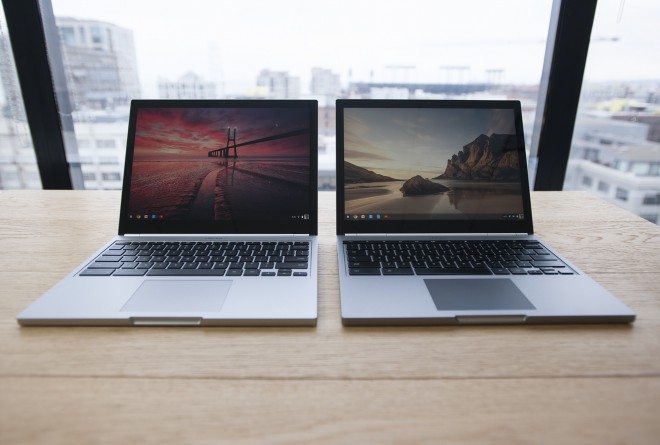Google's second-generation Chromebook Pixel is identical to the original from 2013, and it also remains a standout among Chromebooks, which are considered relatively cheap laptops (prices hover around 250 euros), as it comes with a hefty price tag ( around 940 euros). As a "unit", it will convince developers and computer connoisseurs in particular. But the similarities end there, as the Chromebook Pixel 2 takes a step forward everywhere else compared to its predecessor.
Google with a laptop Chromebook Pixel second generation again calls into question the theory that Chromebooks are only "Robins" among laptops, so the user also needs a "Batman" alongside it, i.e. a classic laptop that can handle all tasks. Well, a premium Chromebook, the Chromebook Pixel is said to be Batman, according to Google. So the only laptop you need. Let's check if this is really the case.

He will stare at you with 12.85-inch touchscreen (3:2 ratio) resolution 2560x1700 pixels at a pixel density of 239 pixels per inch (ppi), which will be protected by glass from damage Gorilla Glass. Google equipped it with a super fast Intel processor Core i5 from the Broadwell family (calculates with 2.2 GHz), which is "retrained" for the other ongoing tasks of the Chrome OS operating system. The system memory capacity is 16 GB, while there is space for data storage of 8, 16, 32 or 64 GB, to which we can add another terabyte of free cloud space as part of the Google Drive service (expiry period: three years).
READ MORE: Google Chrome: Useful tips for using the web browser
The new Chromebook Pixel can also boast of data USB-C interface (it pushed out the USB and microUSB connector), which entered through the main door with a new one MacBooks. It is characterized by the fact that it is the same on both sides, but it will not accept "selective", one-sided USB connectors, which will require a special interface (sold separately). For the stated price, it still belongs to us Intel HD 5500 graphics card, which enables an exceptional experience 4K and the battery, which "gets" the electricity on each 12 hours of use.
More information:
www.google.com





